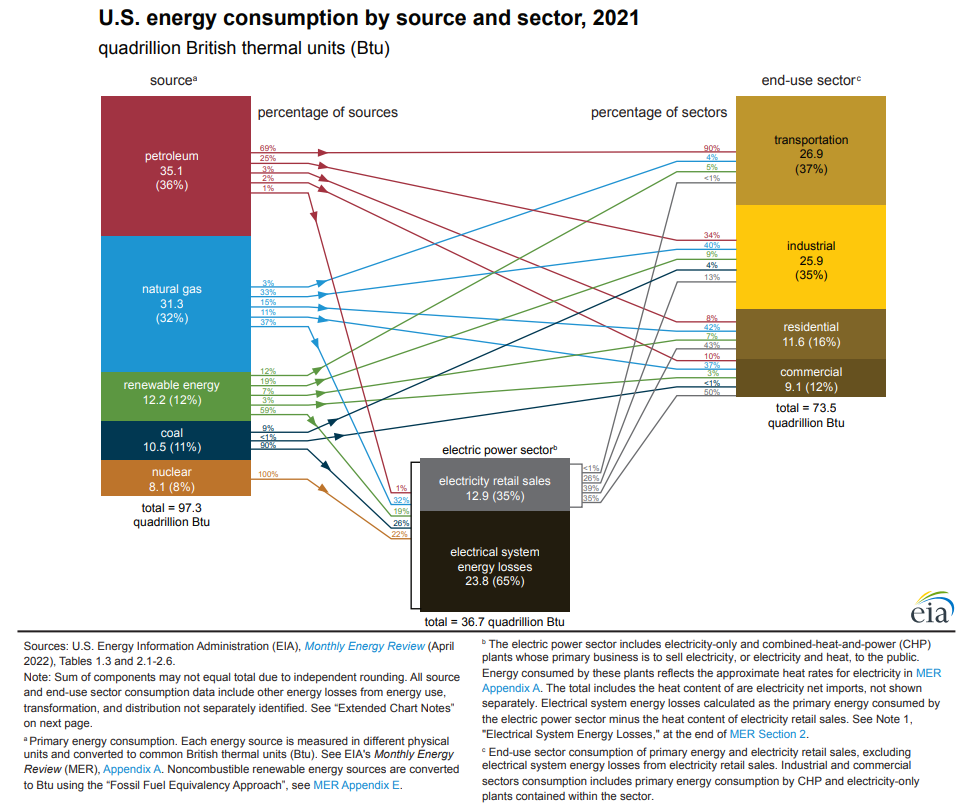How big is the US energy industry?

The US energy industry is a vital component of the nation's economy and plays a significant role in shaping global energy markets. This article aims to provide an insightful overview of the industry, its major players, key statistics, challenges, government regulations, environmental impact, and future projections.
- The Importance of the US Energy Industry
- Overview of the US Energy Sector
- Major Players in the US Energy Industry
- Key Statistics and Trends in the US Energy Industry
- Challenges and Opportunities in the US Energy Sector
- Government Policies and Regulations Affecting the US Energy Industry
- Environmental Impact of the US Energy Industry
- Future Outlook and Projections for the US Energy Industry
- Conclusion
- Frequently Asked Questions
The Importance of the US Energy Industry
The US energy industry is crucial for powering the nation's economy and supporting various sectors such as manufacturing, transportation, and residential needs. It contributes to job creation, technological advancements, and energy security, ensuring a reliable and affordable energy supply for American businesses and households.
Overview of the US Energy Sector
The US energy sector encompasses a diverse range of energy sources, including fossil fuels (coal, oil, and natural gas), nuclear power, and renewable energy (solar, wind, hydroelectric, and geothermal). Each source has its unique characteristics, advantages, and challenges, making the US energy mix one of the most diverse in the world.
Major Players in the US Energy Industry
The US energy industry is dominated by several major players, including multinational corporations, independent producers, and utility companies. Some prominent companies in the sector are ExxonMobil, Chevron, BP, Duke Energy, and NextEra Energy. These companies have extensive operations and investments across various energy sectors.
Key Statistics and Trends in the US Energy Industry
The US energy industry is characterized by several key statistics and trends that shape its landscape. These include energy consumption patterns, production levels, export and import dynamics, investments in research and development, and evolving technologies. Keeping track of these statistics and trends is essential for understanding the industry's current state and its future direction.
Challenges and Opportunities in the US Energy Sector
The US energy industry faces numerous challenges, including volatile commodity prices, geopolitical uncertainties, aging infrastructure, and transitioning to a low-carbon future. However, these challenges also present opportunities for innovation, job creation, and sustainable growth. Embracing new technologies, improving energy efficiency, and diversifying the energy mix are some strategies being pursued to overcome these challenges.
Government Policies and Regulations Affecting the US Energy Industry
The US energy industry operates within a regulatory framework set by federal, state, and local governments. Government policies and regulations affect various aspects of the industry, including energy production, distribution, pricing, environmental standards, and incentives for renewable energy adoption. Understanding these policies is crucial for stakeholders to navigate the complex regulatory landscape.
Environmental Impact of the US Energy Industry
The US energy industry has a significant environmental impact due to the extraction, production, and consumption of energy resources. Fossil fuel-based energy sources contribute to air and water pollution, greenhouse gas emissions, and climate change. However, efforts are being made to reduce the industry's environmental footprint by promoting cleaner technologies, energy efficiency measures, and transitioning to renewable energy sources.
Future Outlook and Projections for the US Energy Industry
The future of the US energy industry is shaped by various factors, including evolving technologies, market dynamics, policy changes, and societal preferences. Projections indicate a continued shift towards cleaner and more sustainable energy sources, increased adoption of renewable energy, advancements in energy storage technologies, and the emergence of decentralized energy systems. These trends are expected to drive innovation, create new job opportunities, and reshape the industry in the coming years.
Conclusion
The US energy industry is vast, complex, and critical for the nation's economic growth and sustainability. It faces challenges, but also presents immense opportunities for innovation, job creation, and environmental stewardship. By embracing a diversified and sustainable energy mix, investing in research and development, and implementing effective policies and regulations, the US can continue to lead in the global energy landscape while addressing environmental concerns.
Frequently Asked Questions
1. How does the US energy industry contribute to the country's economy?
The US energy industry contributes to the country's economy by providing a reliable and affordable energy supply, supporting job creation, attracting investments, and fostering technological advancements. It powers various sectors such as manufacturing, transportation, and residential needs, driving economic growth and competitiveness.
2. What are the primary sources of energy in the US?
The primary sources of energy in the US include fossil fuels (coal, oil, and natural gas), nuclear power, and renewable energy sources such as solar, wind, hydroelectric, and geothermal. The US has a diverse energy mix, with the dominance of fossil fuels gradually giving way to increased adoption of renewable energy.
3. How does the US energy industry impact the environment?
The US energy industry has a significant environmental impact due to the extraction, production, and consumption of energy resources. Fossil fuel-based energy sources contribute to air and water pollution, greenhouse gas emissions, and climate change. However, efforts are being made to reduce the industry's environmental footprint through the adoption of cleaner technologies and renewable energy sources.
4. What are some innovative technologies being developed in the US energy industry?
The US energy industry is witnessing the development of various innovative technologies. Some notable examples include advanced energy storage systems, smart grid technologies, carbon capture and storage, advanced nuclear reactors, and enhanced geothermal systems. These technologies aim to improve energy efficiency, enhance grid resilience, and reduce environmental impact.

Leave a Reply